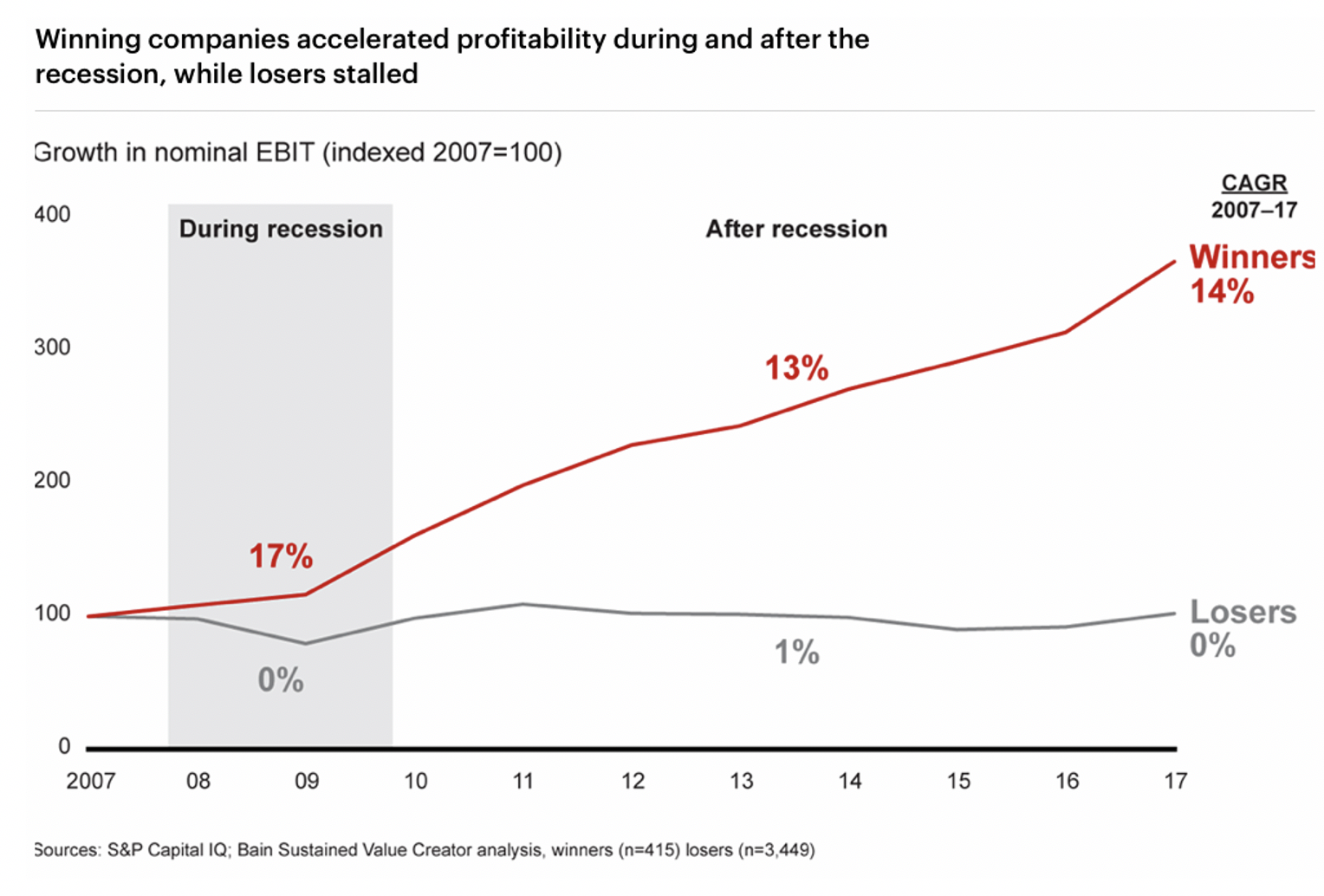 The word “innovation” is defined in many ways and covers a broad spectrum that includes technologies, products, services, processes, distribution, value chains, and business models – each with its own requirements. In its simplest form, innovation involves delivering “something different that has impact” to the innovation target – e.g. clients, customers, employees and society. Impact can be gauged in terms of a measurable outcome such as: return on investment or profit; improved performance of a process; and having a tangible effect on someone’s user experience.
The word “innovation” is defined in many ways and covers a broad spectrum that includes technologies, products, services, processes, distribution, value chains, and business models – each with its own requirements. In its simplest form, innovation involves delivering “something different that has impact” to the innovation target – e.g. clients, customers, employees and society. Impact can be gauged in terms of a measurable outcome such as: return on investment or profit; improved performance of a process; and having a tangible effect on someone’s user experience.
Since the dawn of the global information age in the late 1970s and early 1980s, innovation has accelerated at a pace, and seems to have a resurgence almost every six years as a prime focus of growth strategies. Globally, the fortunes of mid-sized companies are often perceived as a key indicator of a nation’s economic health. A study about business growth drivers in mid-market companies (National Center for the Middle Market – USA, 2018), and PwC’s 20th Annual Global CEO Survey (2017) – both prioritise innovation in their top 3 factors to capitalise on new opportunities. Other important growth drivers included: market expansion; formal growth strategy; human capital development (attracting and retaining quality staff); digital & technology capabilities; financial management; and cost efficiencies.
The COVID-19 pandemic is having a far-reaching effect on businesses – from relationships with their customers, employees, suppliers, to the local communities they support. As the stark economic realities unfold, companies are responding to protect lives and livelihoods. The Grant Thornton International Business Report (IBR) released in July 2020, suggests that the vast majority (88%) of UK mid-market companies surveyed have made fundamental changes to their business models – with more than 50% of respondents expecting to continue with the new model over the long-term. Furthermore, in McKinsey’s B2B Decision Maker Pulse survey (May 2020), 25% of survey participants indicate their intentions to redirect and increase spend towards emerging opportunities.
Lessons from past external shocks – whether the 2000 recession or the 2008 financial crisis, show that during turbulent periods businesses are generally less willing to take risks or invest in longer-term initiatives. A study conducted by Birkbeck Centre for Innovation Management Research on “The Impact of the Economic Crisis on Innovation: Evidence from Europe (published in April 2012)” – suggests that although the 2008 financial crisis led to substantial reductions in firms’ willingness to invest in innovation programmes (from 38% to 9%), the 9% of business still increasing their innovation expenditures during the economic downturn were:
- smaller than before the downturn,
- more likely to collaborate with other businesses – which reflects a shift towards an “open innovation” paradigm,
- keen to explore new market opportunities,
- willing to implement methods of technological appropriation, and
- less likely to compete on costs.
The paper also notes that younger firms (SMEs) were more likely to increase innovation investments post-crisis. This is not surprising, as competitiveness of value chains is dependent on the innovativeness of all links in the chain. In some industries (for example: HealthTech, FinTech and BioTech) responsibility for aspects of technological development is pushed further up the value chain towards smaller firms. For these SMEs to stay relevant, they must demonstrate to their end customers not only the production of competitive, high quality products or services today – but also their commitment to developing the skills, resources and agility to remain competitive suppliers in the future.
 Interestingly, a separate research study (published by Bain & Company in May 2019) suggests that companies that increased their innovation expenditures during the 2008 crisis witnessed stronger long-term growth prospects – these “winners” grew by an average 13% CAGR post-recession, while other firms that reduced their innovation activities flat lined at roughly 1% over the same period.
Interestingly, a separate research study (published by Bain & Company in May 2019) suggests that companies that increased their innovation expenditures during the 2008 crisis witnessed stronger long-term growth prospects – these “winners” grew by an average 13% CAGR post-recession, while other firms that reduced their innovation activities flat lined at roughly 1% over the same period.
Whitecap has conducted research into the innovation challenges facing mid-sized enterprises in the UK – we have identified some important factors that often inhibit stimulation and subsequent sustainability of innovation activity. These include:
- inherent risk aversion characteristics – mid-market firms generally have lower cash reserves (than large businesses) and fewer technical/managerial competences to invest in innovation;
- requirements for tailored innovation processes that reflect the SME context – as models for innovation in large firms seldom translate to mid-market companies due to different risk/reward ratios and shareholder aspirations;
- need for greater clarity in the business support landscape – reflecting a lack of awareness and confusion about business growth services available within their Local Enterprise Partnerships (LEPs);
- lack of intellectual property rights (IPR) strategy – many firms do not have IPR integrated into their overall business model due to a lack of knowledge and expertise; and
- innovation skills gap – the requirement to embed growth mindsets, systems and skills throughout the firm to drive organic innovation (in-house) and assimilation of new knowledge by collaborating with external partners and customers.
Based on our experience at Whitecap, we believe that established SMEs, mid-sized organisations and divisions of corporates who are facing some of the innovation challenges highlighted here, should start with some practical steps to develop their innovation capabilities:
- Innovation Audit – Perform internal and external assessments to benchmark your organisation’s existing innovation capability. Having the perspectives of an independent external facilitator with experience across different markets will strengthen the learning outcomes from this exercise.
- Innovation Ambition – Define the forms of innovation that drives growth and helps deliver your strategic goals. Your senior leadership team working in partnership with external experts should leverage the findings and recommendations from the ‘innovation audit’ stage.
- Innovation Roadmap – Develop the framework that supports the channels for innovation to flow through your organisation. Innovation should be formalised in the agenda at your regular leadership meetings. Your innovation journey can be tracked by setting performance metrics and targets (quantitative – such as financial returns associated with new customer propositions; and qualitative measures that positively challenge and change current behaviours and norms from an innovation viewpoint).
We are always interested to learn about the specific innovation challenges facing organisations, and would welcome the opportunity to discuss how we might provide an independent external perspective to support your innovation journey.
If you’d like to discuss this blog post or share your own perspective on the issues covered, please get in touch or comment via our social media channels on LinkedIn or Twitter.
Established in 2012, Whitecap Consulting is a regional strategy consultancy headquartered in Leeds, with offices in Manchester, Milton Keynes, Birmingham, Bristol and Newcastle. We typically work with boards, executives and investors of predominantly mid-sized organisations with a turnover of c£10m-£300m, helping clients analyse, develop and implement growth strategies. Also, we work with clients across a range of sectors including Financial Services, Technology, FinTech, Outsourcing, Consumer and Retail, Property, Healthcare, Higher Education, Manufacturing and Professional Services, including Corporate Finance and PE.